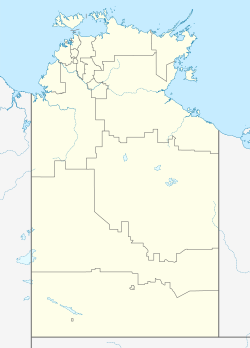History
The site of the Barrow Creek Telegraph Station was selected by John Ross, in 1871, during his Overland Telegraph exploring party which followed on from more general exploration undertaken by John McDouall Stuart. The site was selected due to the supposed availability of water and the polling and wiring of the area was completed in the same year. By January 1872 work had also completed the construction of a small stone hut and had begun constructing the Telegraph Station itself. [1]
The Telegraph Station was officially opened by the Post Master General Charles Todd, who was travelling through the area, on 16 August 1872. [1]
In 1873 approximately 5,000 sheep were overlanded by Alfred Giles to stock the Telegraph Stations along the line and, at Barrow Creek, Kaytetye people speared some of the sheep and horses. This resulted in the construction of a police station in the Telegraph Station complex and the first mounted constable stationed there was Samuel Gason. [1]
Buildings continued to be constructed at the Telegraph Station until the 1880s and many of these buildings remain intact at the site. These included an elaborate stone fence (designed to fortify the station), a wagon shed and a blacksmith's hut. The Telegraph Station also has its own cemetery which is known to have three graves. [10] [11]
The Telegraph Station ceased operation in 1935 when the line ceased carrying international traffic, following the establishment of the Pacific and Indian Ocean cables but it remained in use by the police station. [1]
In 1941, during World War II, the Telegraph Station became a telephone repeater station to ensure that Army personnel could communicate throughout the Northern Territory and, from May 1942, Army unit were stationed there and it became a staging camp for Army convoys. [1] [12]
In 1975 the station was transferred to Telcom Australia (Telstra) until it was made redundant in 1980. [1]
This page is based on this
Wikipedia article Text is available under the
CC BY-SA 4.0 license; additional terms may apply.
Images, videos and audio are available under their respective licenses.



